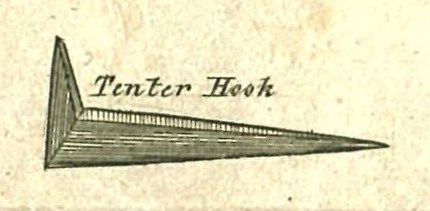 It will be recalled (blog article, October 1, 2019) that today was to be the day that Australia would join the DAS system as an Accessing Office and as a Depositing Office for industrial designs. I am delighted to be able to report that this has actually happened, as you can see here: Continue reading “Today is the day for IP Australia and designs in DAS”
It will be recalled (blog article, October 1, 2019) that today was to be the day that Australia would join the DAS system as an Accessing Office and as a Depositing Office for industrial designs. I am delighted to be able to report that this has actually happened, as you can see here: Continue reading “Today is the day for IP Australia and designs in DAS”
Amazon IP Accelerator – a flawed service

On October 1, 2019, Amazon launched its IP Accelerator service. Through this service, Amazon offers a jump-the-line way for a seller to get into the Amazon Brand Registry. Amazon did not do this well, and Amazon’s actions will likely harm consumers, as I will explain. Continue reading “Amazon IP Accelerator – a flawed service”
Helpful initialisms – WYHA? WYHO? WYHP?
John L. Welch of TTABlog fame has coined three initialisms that have enriched the lives of all trademark practitioners. Continue reading “Helpful initialisms – WYHA? WYHO? WYHP?”
Using “acronym” correctly
It was Penn Jillette whose comments on a television show (NSFW) made me realize that I had been misusing the term acronym all my life. Continue reading “Using “acronym” correctly”
Time zones and ePCT
Yesterday I blogged about the fact that Europe and US do their daylight saving time changes on different weekends: E-filing at WIPO – you get an extra hour. This prompted Ann Bardini of WIPO to write to me to offer a reminder of some of the features of ePCT that help users to keep track of when midnight is coming and when a filer’s last possible filing date is imminent. With her permission I have more or less converted her email message into the following guest blog posting. Continue reading “Time zones and ePCT”
Tenterhooks, or how the Hobson’s choice came out
 Maybe some readers of the blog have been on tenterhooks for the past two days, hoping to hear what meal I was eventually offered yesterday on my return flight from Maryland (blog article Hobson’s choice) after attending the sixteen annual Patent Cooperation Treaty Advisory Group Working Breakfast sponsored by the World Intellectual Property Organization. The answer follows. Continue reading “Tenterhooks, or how the Hobson’s choice came out”
Maybe some readers of the blog have been on tenterhooks for the past two days, hoping to hear what meal I was eventually offered yesterday on my return flight from Maryland (blog article Hobson’s choice) after attending the sixteen annual Patent Cooperation Treaty Advisory Group Working Breakfast sponsored by the World Intellectual Property Organization. The answer follows. Continue reading “Tenterhooks, or how the Hobson’s choice came out”
e-filing at WIPO – you get an extra hour
It’s that time of year again. People in the US who sometimes e-file stuff at the International Bureau at WIPO will have memorized exactly what the local time is that works out to being midnight in Switzerland … and for the next week, the answer to this question will be different from the usual answer. Continue reading “e-filing at WIPO – you get an extra hour”
Hobson’s choice

United Airlines recently started asking its first-class passengers a few days before the flight whether they prefer one entree or the other. But for me it was a Hobson’s choice. Continue reading “Hobson’s choice”
Save the date! USPTO Design Day 2020
Save the date! USPTO Design Day 2020 will be Thursday, April 23. This will be at the big auditorium at the USPTO in Alexandria, Virginia.
Tomorrow is Mole Day
 I trust that readers of this blog who are chemistry enthusiasts are paying attention to the fact that tomorrow is Mole Day. The observance of Mole Day runs from 6:02 AM tomorrow (10/23 or October 23) to 6:02 PM.
I trust that readers of this blog who are chemistry enthusiasts are paying attention to the fact that tomorrow is Mole Day. The observance of Mole Day runs from 6:02 AM tomorrow (10/23 or October 23) to 6:02 PM.
Have you made special plans for Mole Day? Please post a comment below.
